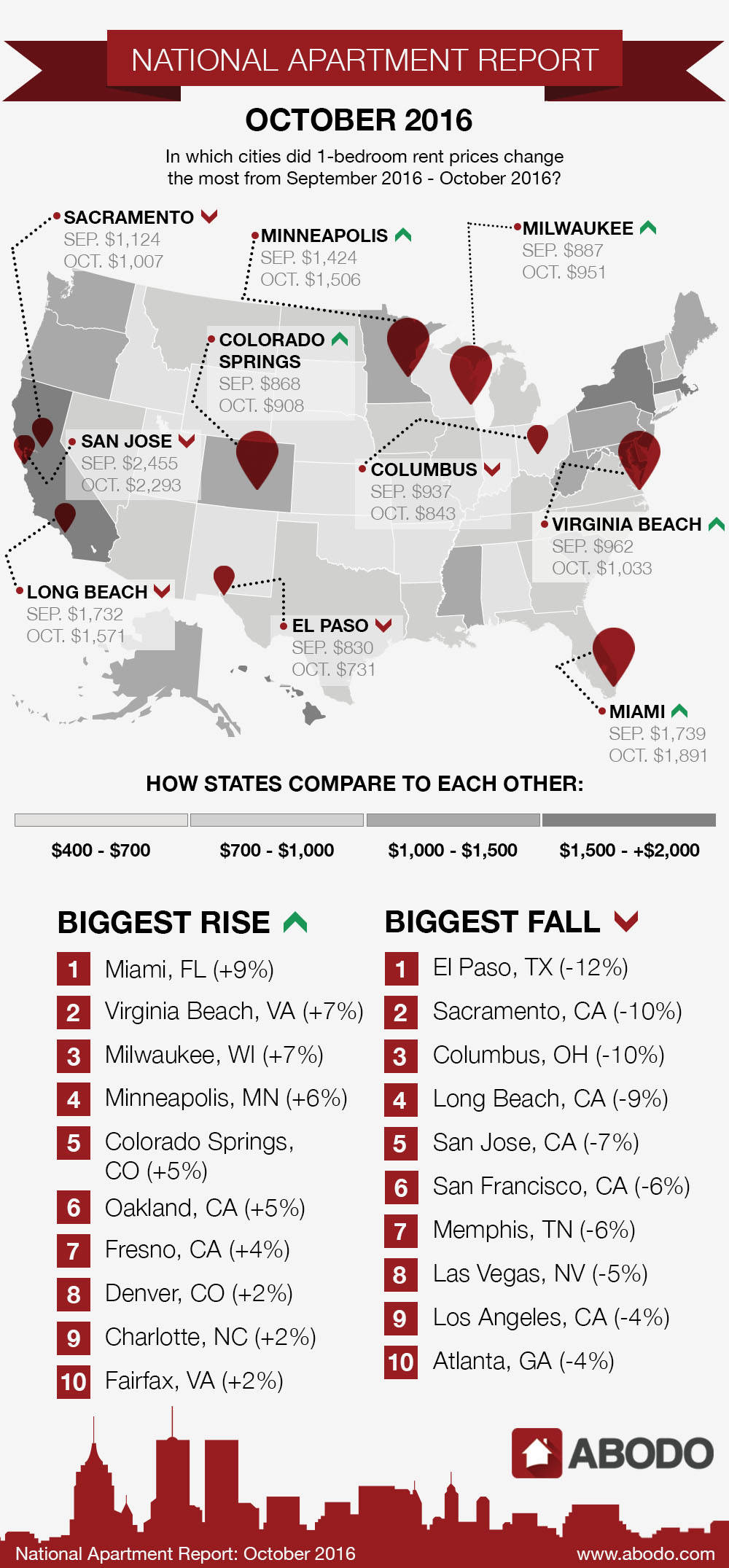Graphic: Where is rent increasing and decreasing the most?

Rent Increases in Several Swing-State Cities, Just In Time For Election Season
For the 2016 presidential election, has identified 11 “swing states”: Colorado, Florida, Iowa, Michigan, Nevada, New Hampshire, North Carolina, Ohio, Pennsylvania, Virginia, and Wisconsin. Eight of these battleground states, in which support for Republican and Democratic presidential candidates is contentious and relatively closely matched, experienced significant rental rate changes over the past month, according to Rentable data.
Nine of the 10 swing-state cities in our report experienced rent increases over the month of September. Two were in Colorado, where job growth has proceeded hand in hand with an influx of new renters. In rapidly growing Denver, rents rose 2% to $1,394, while in Colorado Springs, one-bedroom rents rose from $867.63 to $907.83, for an increase of 4.63%. Virginia also saw increases in two cities, D.C.-adjacent Fairfax (+2%) and Virginia Beach, where average one-bedroom rents rose 7% to $1,033 per month.
In the Midwestern battleground states, Minneapolis and Milwaukee saw rent increases of 6% and 7%, respectively. And in historically volatile Florida, Miami saw its average one-bedroom rents rise 8.74%, to $1,890.50.
The only two cities located in swing states to experience rent-price drops were Las Vegas, which saw its average one-bedroom price decrease 5% to $840, and Columbus, OH, where the rent for a one-bedroom apartment fell from $937.27 to $842.70, a decrease of 10%. This was the third-highest drop in the country last month, behind Sacramento (10%) and El Paso (12%).
According to an , economic issues have been at the forefront of the campaign, as each candidate attempts to assuage middle- and working-class voters’ fears about the country’s economic health.
Candidates on both sides of the political aisle rarely talk about housing; instead, the rhetoric is usually centered on job-creation, taxes, and trade. Although Hillary Clinton’s platform includes a $, she didn’t mention it in the first presidential debate. The closest Donald Trump came to the topic was disputing former Secretary Clinton’s claim that he was at the center of the housing crisis, and in fact profited from it.
More and more Americans are renting — 9 million more than a decade ago, according to the Joint Center for Housing Studies at Harvard — and how much they pay per month is one of the economic pressures affecting their political outlook. Although no one would be so foolish as to try to predict the outcome of a presidential election by average rental price trends, their absence from political discourse is curious. The above data, however limited in scope, provides an interesting look at a single factor which is often symptomatic of a larger set of economic issues, during an election cycle in which issues of class, employment, and the economy have played such important roles.
